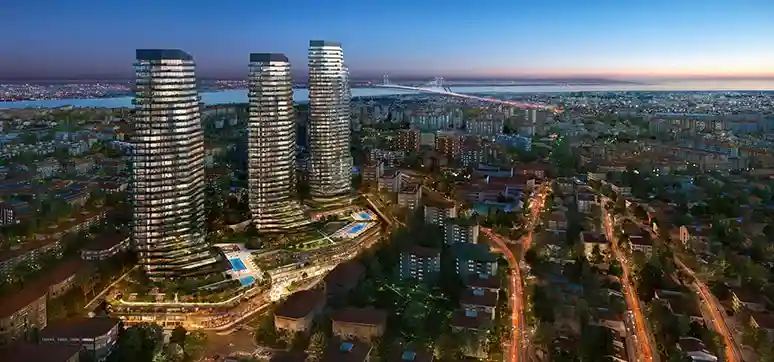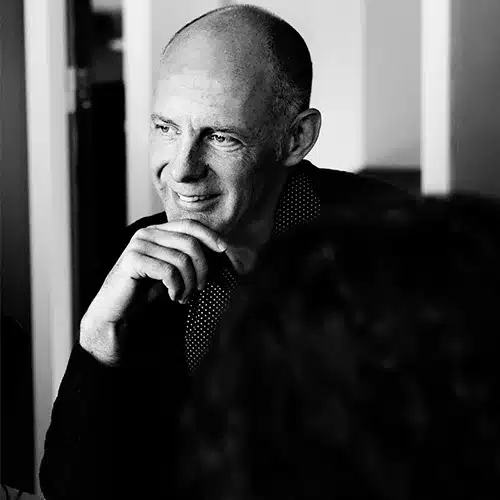UNStudio was appointed to design the masterplan and architecture for the new Mandarin Oriental Hotel and Residences in Etiler, a prestigious residential quarter on the European side of Istanbul, located close to the city’s central business district. The 216,740 m2 development comprises three high-rise towers that merge with a lush green garden above a commercial podium with underground parking. The new Mandarin Oriental Hotel and Residences is planned to open in 2022.
Programme
The three towers within the development accommodate different living typologies. One of the towers will house the Mandarin Oriental Etiler, Istanbul with 158 guestrooms and suites and 16 serviced apartments. The remaining two towers house 251 residences at Mandarin Oriental. The hotel will have three restaurants and bars, a selection of adaptable meeting spaces with outdoor areas and terraces, a spa and fitness centre, and both an indoor and outdoor swimming pool. The residences at Mandarin Oriental will enjoy direct access to the hotel’s facilities, in addition to bespoke resident facilities, which include two outdoor swimming pools and a fitness centre. The commercial plinth comprises retail shops, offices and public amenities. It extends to three levels below the garden level and is accessible directly from the commercial plaza entrance at Selcuklar Sk.
The Urban Plan
With its unique topography, the beauty of Bosporus and the amalgamation of different cultures throughout the centuries, Istanbul provides its residents with a varied and rich quality of life. This new mixed-use development in Etiler reflects the contemporary lifestyle of both local and international people who want to be part of this vibrant and modern metropolis. The site, located in the district of Beşiktaş, close to the business quarters of Levent and Maslak, is a hidden jewel within Etiler. It is easily accessible by the main axis Nispetye Cd and is within easy walking distance of Akmerkez shopping mall. The three entrances to the project are formed by the hotel lobby at the southern tip of the site closest to Nispetye Cd, the residential lobby that faces inwards for privacy, and the commercial plaza entrance along the Selcuklar Sk. A three-level parking below the commercial plinth services, in distinct flows, the residences, the hotel and the public programme.
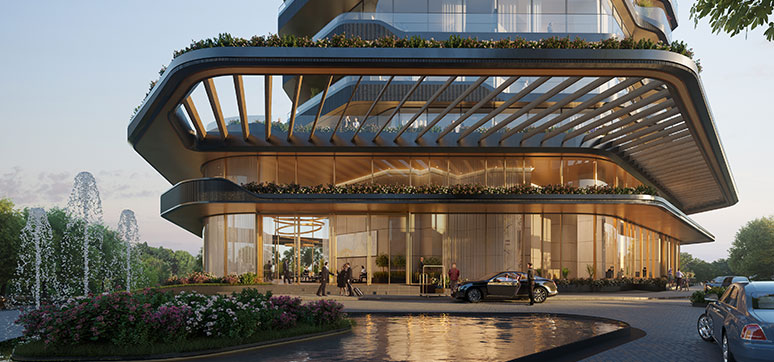
The urban scale of the Etiler neighborhood informs the entirety of the building perimeter. Taking advantage of the existing slope on the site, the podium appears to be partially tucked underground. This gesture not only reduces the impact of the volume at the urban scale, but also enables the lush garden area to be highly visible to the whole neighborhood, thereby adding to the quality of living in Etiler.
Sculpted Living
The design of the towers plays a key role in the implementation of sustainability measures, which begin with the massing. A sequence of passive considerations carefully curate the towers’ position, shape and form. The towers are placed on the east side of the site. This placement is the result of parametric testing with the goal to find the optimal positioning for the towers to avoid casting shadows on each other and on the garden in the afternoon hours, in addition to minimising impact on the surrounding neighbourhood. The shape of the tower footprint is also optimized to create minimum impact towards the predominant NNE wind direction, while the façade length is maximized in order to provide all residences with the desired views over the Bosporus. The form of the towers results in a sculpted effect with a serene yet robust expression. The towers comprise three parts that are programmatically attuned. The top floors gradually step inwards at the side with the most prominent views, in order to allow for larger penthouse terraces, whilst reducing impact at the city scale. The central levels, which form the core of the tower, host most of the residences. The lower floors establish the connection with the garden. This occurs as a continuous gesture in which the lower levels fan outwards to create the garden residences. This ‘fanning’ approach enables the towers to seamlessly merge with the garden, as the two elements come together to provide a healthy biophilic element that increases the occupants’ connectivity to the natural environment.
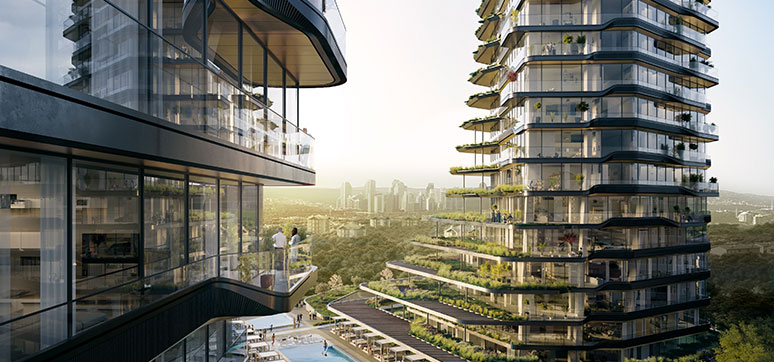
Façade & Sustainability
The predominance of stunning views on all sides of the site became the main driver for the façade design. As a result, a glass façade wraps around the towers, enabling all rooms, whether private or shared, to enjoy the same uninterrupted views to Bosphorus and the Levent area. A horizontal ribbon then wraps around each floor and introduces variety to the balustrade design. These ribbons, whose depth depend on the vertical positioning on the tower, become the outward horizon of the terraces. The resulting parameters that vary throughout the height of the building are: depth of terrace, height of ribbon and integration of green.
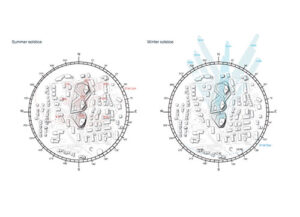
The terraces contribute significantly to the reduction of the heat load on the large glass surfaces of the towers. Aside from the terraces where a depth of 1,80m is secured to accommodate comfortable outdoor living, a continuous French Balcony surrounds the full plan, providing access to all rooms. All rooms can also enjoy natural ventilation, while apartments have the opportunity to cross-ventilate, thereby reducing the need for air-conditioning and high energy usage. The ribbons work differently in the urban scale: when viewed together, they present a tailored silhouette for each tower. Depending on the program,
height, unit count, and layout of each floor, the ribbons respond differently in their individuality, yet as a whole, they correspond to express the entirety of the project. To accentuate the individuality of each residence, the outline of each terrace recesses or extends in relation to the terrace above. As a result, every resident enjoys a double-height outdoor living space: an experience of villa living in the sky of Istanbul.
Designing with Craftsmanship
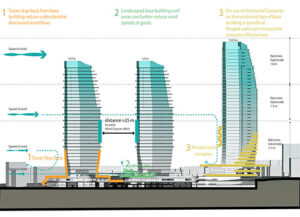
The quality of living spaces also depends on the tactility of the materials that surround them. The aim of the façade design for the Mandarin Oriental Hotel and Residences is therefore to employ materials that portray artistry, wherein handcraftsmanship is evident in the quality of the design and workmanship. This is made apparent in elements produced by hand but translated into contemporary design.
Metalwork, pottery, ceramics and woodwork, become the references for the principal materials used in the project. The anthracite ribbons are clad with glazed ceramic tiles, inspired by centuries of tradition and knowledge, in addition to a multicultural mixture of influences. The ceramic tiles are inserted within the ribbon profiles and are cast in such a way as to catch the light
differently across the course of the day. The tactility and texture of the material elevates the outdoor living experience by introducing a detail that is similar to custom designed living spaces. Bronze details throughout the project elevate the spatial experience and give the feeling of both tradition and exclusivity. Such details are employed in the lobby areas and in the ceiling design of the terraces.
In addition, bronze panels that have been perforated with a dedicated pattern are used for privacy throughout the garden areas.

A sense of place at the commercial entrance is achieved by introducing wooden frame elements that accentuate the scale of each shop, rather than the scale of the podium. The detailing of the frames further incorporates the technical requirements for ventilation and reflects the honing of the design to achieve a natural and tactile environment.
